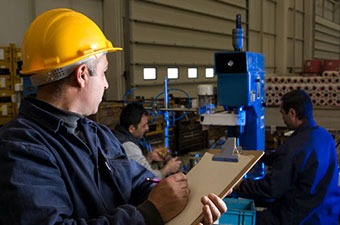
Standardization is defined as establishing methods and procedures to improve reliability and maintainability. This can include:
- Reducing setup times
- Procedures for handling of raw materials
- Procedures for handling of rework pieces
- Creating visual controls and inspection methods
- Standardizing optimal equipment settings
The goal is to reduce the variation in the manufacturing process so that consistency, efficiency, and quality are improved.
For example, a manufacturing process is operating with two shifts and each shift operates the equipment at different settings, although both shifts may get the same final results of “product within specifications,” this can cause other problems down the line. The issues are that one shift operates at the lower end of specifications and the next shift operates at the upper end of specifications, and even though they are both making a good product, it is not optimal for the company. The possibility of having to make adjustments to downstream equipment is greater after making measurable adjustments to upstream equipment, which can waste time and is not a value to operating conditions. In effect, unnecessary variations are being added to the production process, in contrast to the goal of reduced variation.
As part of the standardization process, small group activities examining the current procedures in place should be an ongoing endeavor. As part of the process discipline, the following procedures or work methods should be examined on a regular basis:
- Setup procedures
- Startup/shutdown procedures
- Workplace layout and organization
- Storeroom organization
- Maintenance tasks
- Data and reporting procedures
Each of these items should be examined for ongoing improvements during the regular small group meetings in order to streamline production and eliminate waste.
To learn more about how Technology Transfer Services can put your organization on a path to world class maintenance, call us at (813) 908-1100 today!

